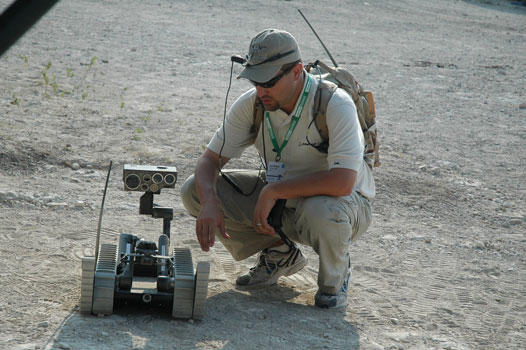TPM recently reported that DARPA, the Department of Defense’s agency that develops new technologies for future military use, has been laying the ground work to send humans five light-years into space to visit the stars. “How can they top themselves after announcing that?” you might be wondering.
Two words: “Cyber Camouflage.” How about another two words? “Robotic Hummingbirds.” These are just two of the hundreds of projects DARPA has included in their 2012 unclassified budget request. Barack Obama’s 2012 budget proposal requests $2.9 billion in funding for DARPA, including $270 million in sensor technology, $61 million to machine intelligence, and $107 million for “Classified DARPA Programs.”
Here’s quick run-down of some of DARPA’s proposals:
- Reliable Neural-Interface Technology (RE-NET) ($24.5 million) This project will “develop the technology needed to reliably extract information from the [human] nervous system.” While it may sound nefarious, the research actually focuses on helping enable the design of better prosthetic limbs that could interface directly with the human nervous system.
- Cyber Camouflage, Concealment, and Deception (C3D) ($15.8 million) How can you conceal a computer network from enemy hackers? C3D “will develop novel approaches for protecting cyber systems that mimic camouflage concealment, and deception in the physical world.”
- XTIM ($8 million) Knowing the exact position of military satellites is key, but it can be a challenge keeping track of your eyes-in-the-sky as they speed around the Earth at thousands of miles per hour. Project XTIM seeks to use pulsars — dense stars that emit huge amounts of radiation — to pinpoint exactly where its satellites are. “XTIM will create a truly autonomous and universal time reference for military navigation and communication needs.”
- Small Rugged Reactor Technologies ($10 million) Wired’s Danger Room blog noticed this program earlier Friday. With the high cost of transporting traditional fuels across battlefields, DARPA wants to develop mini-nuclear reactors to create completely self-sufficient bases.
- Machine Reading and Reasoning Technology ($29.8 million) IBM has its Watson supercomputing answer-machine, and it looks like the military wants one of for its own use. “Such technologies will provide DoD decision makers with rapid, relevant knowledge from a broad spectrum of sources that may be dynamic and/or inconsistent.”
- [Micro-]Propulsion Science ($10 million) With the introduction of ever smaller unmanned air and sea vehicles, there is a need to shrink the power-supplies for these ultra-small devices. With suggestions for “biomimetic” systems, the next time you see a robotic hummingbird flying around you, you’ll know it was likely sent by DARPA.






